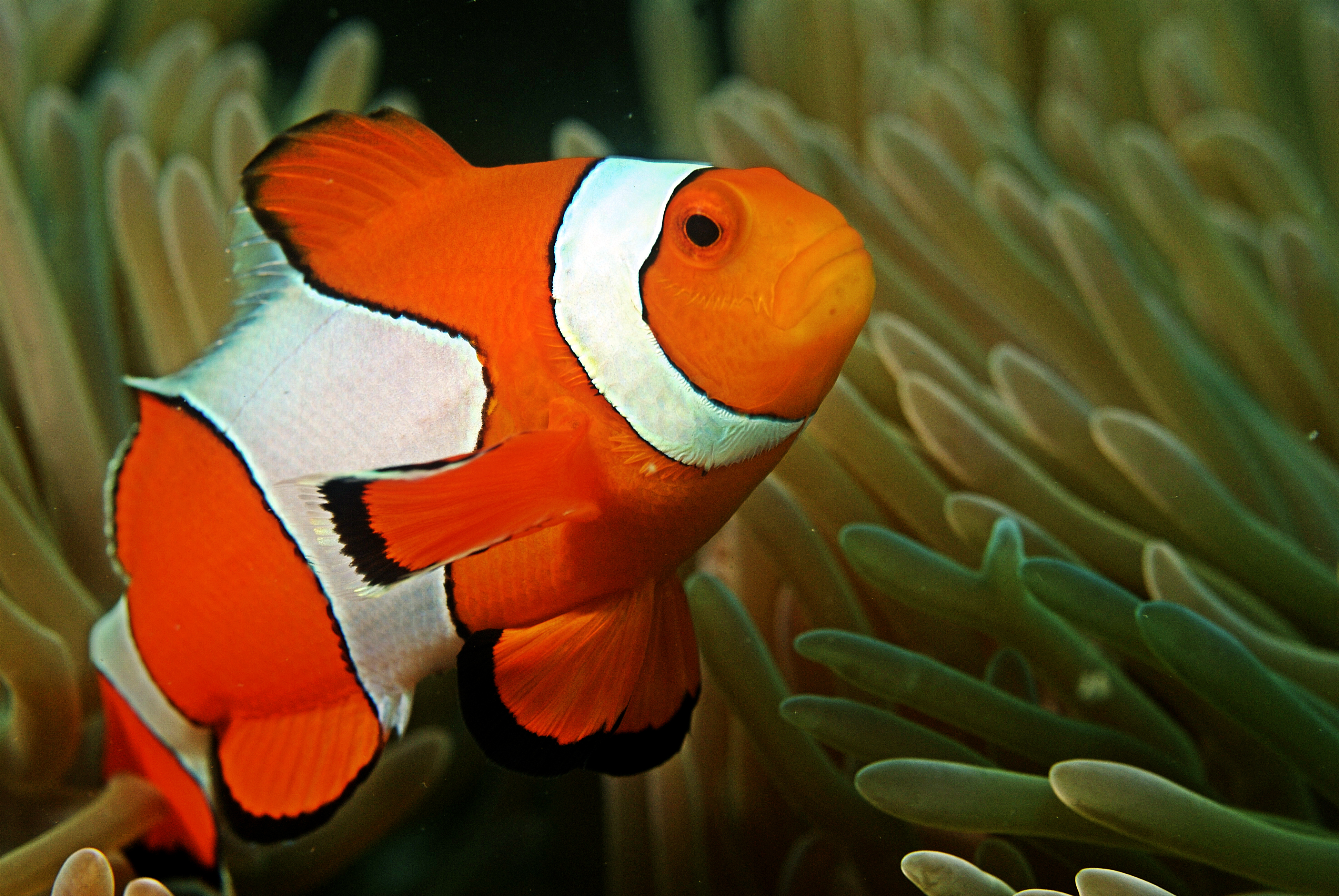In honor of World Animal Day, which I don’t otherwise care about, Broadly is sharing some animals that can change their sex or are both male and female at the same time. It might seem a bit of a stretch to relate animal life to human politics, but to quote what some MRAs trolls have shouted at me on Twitter, “biology is biology.” These people often argue that there is an absolute biological distinction between males and females, and that’s simply not true. Humans have many areas of overlap when it comes to biological sex characteristics, and in the animal kingdom, lines can blur even more. People often find it easier to empathize with dogs and stuff like that rather than other people, so let these animals be your guide to understanding this concept.
Regarding sex-changing animals, the technical term for this phenomenon is sequential hermaphroditism. It generally goes one of three ways: Males can turn into females (protandry), females can turn into males (protogyny), and bidirectional or simultaneous sex change, where the animal is both male and female simultaneously, altering between the sexes at different points of its life. Such activity is particularly common among fish.
Videos by VICE
Dr. Scott Heppell of Oregon State University says that the phenomenon of sex-change among some animals can be advantageous to the species. Speaking specifically about fish, Heppell told Broadly that “there are several families of fish that have sex changing species, so it is far from uncommon.”
Sometimes the changes occur because mates are hard to find, so the animal makes its own, or it can be an issue of size. If you can’t successfully reproduce as a male when you are small, then you can maximize your lifetime reproductive output by spawning as a female,” Heppell says.
Fish are most commonly talked about for sex changes— The New York Times reported on the prevalence of fish sex changes as far back as the 80s, but it is also possible in other groups. And in addition to animals that can change their sex, there are animals that are both male and female at the same time, or that have naturally occurring aspects of the opposite sex. Here are some of these atypically sexed animals.
(Feel free to talk about them to your stupid boyfriend who I guarantee has commented on one of Broadly’s articles to say that “there are no chicks with dicks, just dude with tits!”)

Clown Fish
This brightly colored blob is one of the most popular transsexual animals. According to Marinebio.org, a website devoted to sharing the wonders of sea life with the world, clown fish have hierarchical communities, where a female dominates and has sex with a big man fish. “If the female dies, then the dominant male will sex-change into a female, and a non-dominant male will change into a dominant male,” the author explains. This is a species of “sequential hermaphrodites,” which means they’re all born male and later turn into females.

This Slipper Limpet
The Crepidula cf. marginalis aka slipper limpet sea snail is unique in it’s ability to change sex. According to researchers, the change occurs as the result of being touched by other male slipper limpets. A study was conducted to understand how these little snails change sex. And, as reported in IFLScience, it was found that “physical contact between snails plays a vital role in activating the switch from male to female.” Now that is one of the most beautiful and natural things that I can imagine.

Cardinals and Chickens
Cardinals and chickens can’t swap sexes the way some fish, snails, and coral do. But there are cases in which these animals have been half male, half female. Technically, they are known as bilateral gynandromorphs, and they have been a hot topic in the scientific community ever since 1923, when a doctor cut open his bi-sex chicken to eat it and found testes as well as an ovary. Bilateral gynandromporhism has been seen in cardinals, too: one bird scientist saw an intersex cardinal out his window—half gray, half red, right down the middle.
A 2015 BBC story outlines how this can happen to butterflies, parrots, snakes, lobsters, and more. They are distinct from hermaphroditic animals: rather than having just the sexual organs of both sexes, these “half siders” are literally half male and half female across their entire bodies.

Bearded Dragons
They are really cool. One study found that male bearded dragons can change their sex while they’re in their eggs. A 2016 study found that, if bearded dragon eggs are exposed to warmer temperatures, male dragons eggs will alter the course of their development and become female, despite remaining genetically male. Researchers found that the change isn’t merely social—they resemble the other sex in various ways and can actually reproduce and lay viable eggs.

Spotted Hyenas
Hyenas are the best because girl hyenas have penises, making them the official trans girls of the Animal Kingdom. The “pseudopenis” of female hyenas is actually just a huge clitoris with a ballsack-looking-thing made out of fused-together labia. As PBS reported, they are the “only mammalian females to copulate, urinate, and give birth through the penile-like canal. It’s even possible for females to achieve erections.” Hyenas have to “retract” these appendages into their body in order for a male to have sex with them.
So next time someone says that your sex is defined by your biology, remind them that sex is comprised of many different biological factors that aren’t as binary as some seem to think.
More
From VICE
-

John Belushi (Photo by Michael Gold/Getty Images) -

All Pictures by Ashton Hertz -

Alex Wong/Staff/Getty Images -

NASA/YouTube
